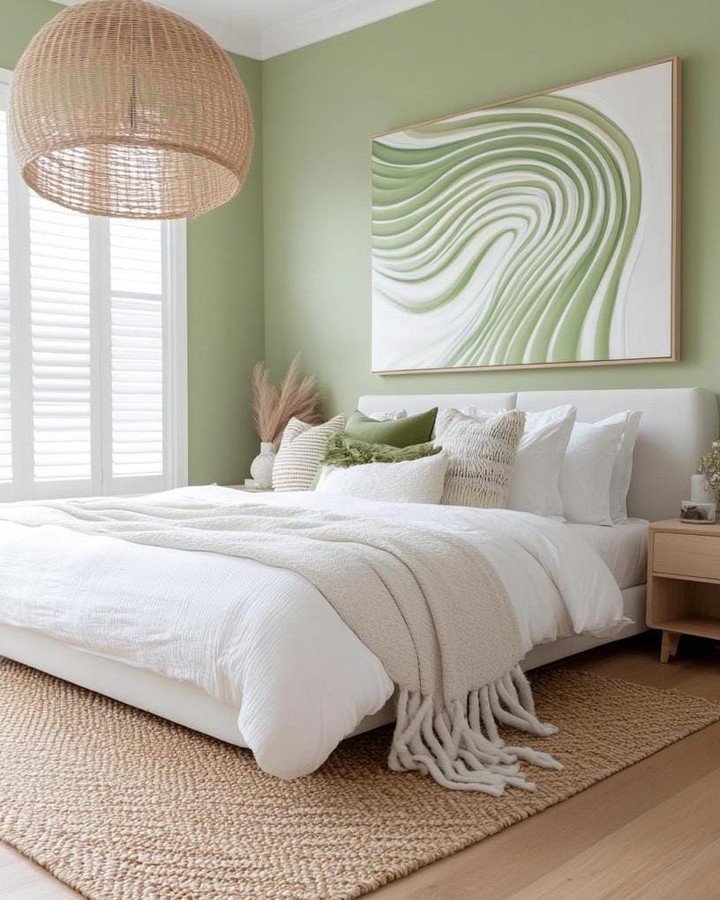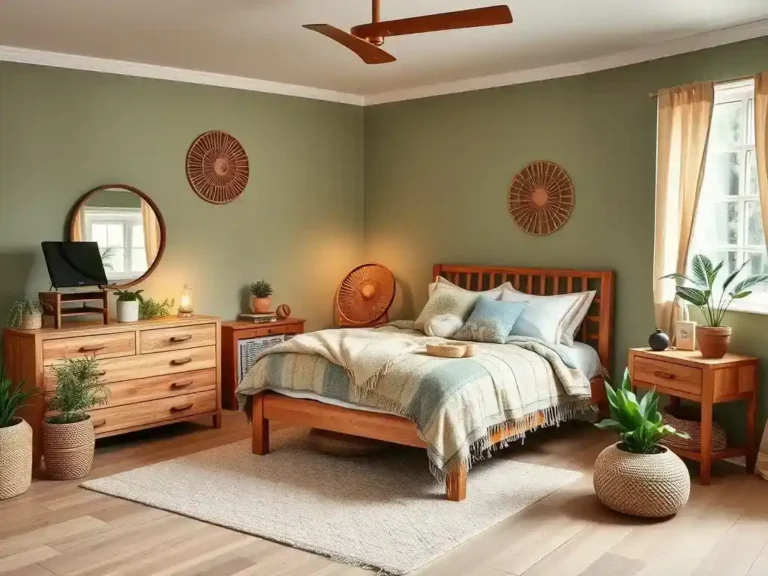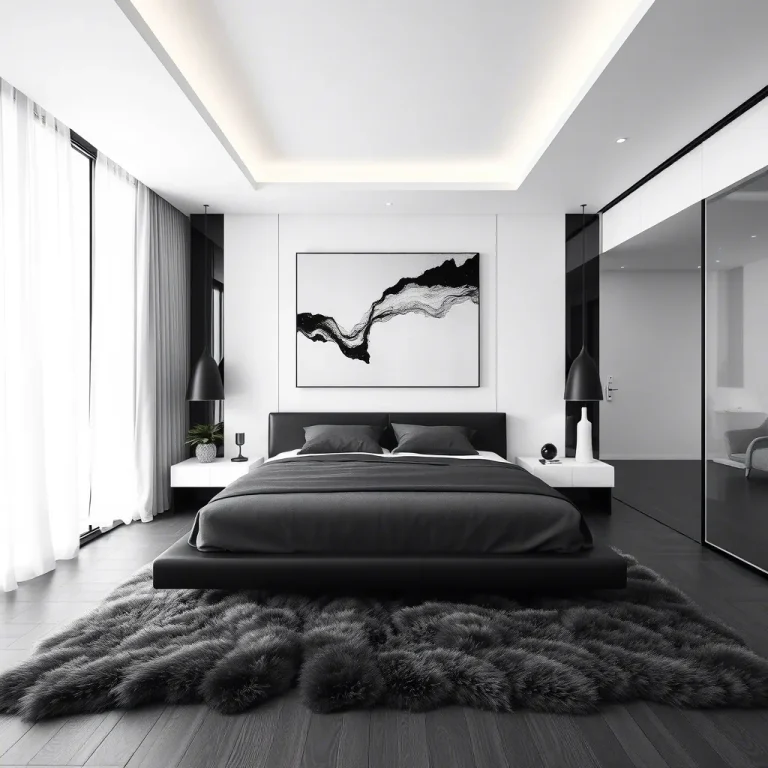Keeping a child’s room organized can feel like a never-ending battle against chaos. Toys multiply overnight, clothes end up everywhere, and finding anything at the right moment becomes a scavenger hunt. Whether you’re a parent, guardian, or simply someone trying to maintain some level of household order, you know the struggle is real.
But here’s the good news: with the right strategies and a little creativity, your child’s room can be both functional and fun. From clever storage hacks to playful design tricks, organizing a kids’ room doesn’t have to mean sacrificing personality or style. In fact, the best systems not only keep things tidy—they also help kids learn responsibility and independence.
Tips for Crafting a Brilliant Kids’ Room Organization
Imagine walking into your child’s room, toys and books neatly tucked away, the space feeling like a playful sanctuary where both kids and parents can breathe easy. These clever organization ideas will transform your kids’ room, perfect for sparking creativity during playtime or keeping chaos at bay for bedtime routines.
- Use Colorful Baskets: Place vibrant woven baskets for toys or clothes, adding a fun, tidy vibe. It’s like the room’s hiding clutter in a rainbow of cozy nests.
- Add Low Shelves: Install kid-height wooden shelves for books and games, keeping them accessible. It feels like the room’s inviting kids to grab and play.
- Incorporate Under-Bed Bins: Slide flat, clear bins under the bed for extra toys or seasonal clothes. It’s like finding a secret treasure chest for storage.
- Hang Wall Pockets: Use fabric pockets on the wall for small items like art supplies or socks. It’s like the walls are pitching in to keep things organized.
- Label with Fun Tags: Add chalkboard or colorful labels to bins for easy cleanup, even for little ones. It feels like the room’s whispering, “Put me back!”
- Create a Play Zone: Designate a corner with a rug and baskets for toys to contain the mess. It’s like the room’s carved out a playground that tidies itself.
- Use Multi-Use Furniture: Choose a bed with drawers or a desk with cubbies to maximize space. It’s like the furniture’s working overtime to save your sanity.
In this article, we’ll explore 21 genius kids’ room organization ideas that will transform the mess into a manageable, well-organized space. Whether you’re dealing with a tiny bedroom or a shared space for siblings, there’s something here to help you reclaim the floor (and your peace of mind).
1. Maximize Vertical Space with a Built-In Study Station

In kids’ rooms, smart use of vertical space is a game-changer. This built-in study station makes excellent use of the wall by combining a long desk with colorful drawers, open shelving, and upper storage compartments.
It keeps books, school supplies, and even sports gear neatly in place—leaving no excuses for cluttered desks or misplaced homework. The bold drawer colors add a playful touch while helping kids learn to associate colors with specific storage functions (e.g., blue for crafts, orange for tech accessories).
Incorporating storage into study zones encourages better focus, minimizes distractions, and helps kids take ownership of their schoolwork space.
2. Use Open Storage with Labeled Bins for Toys and Books
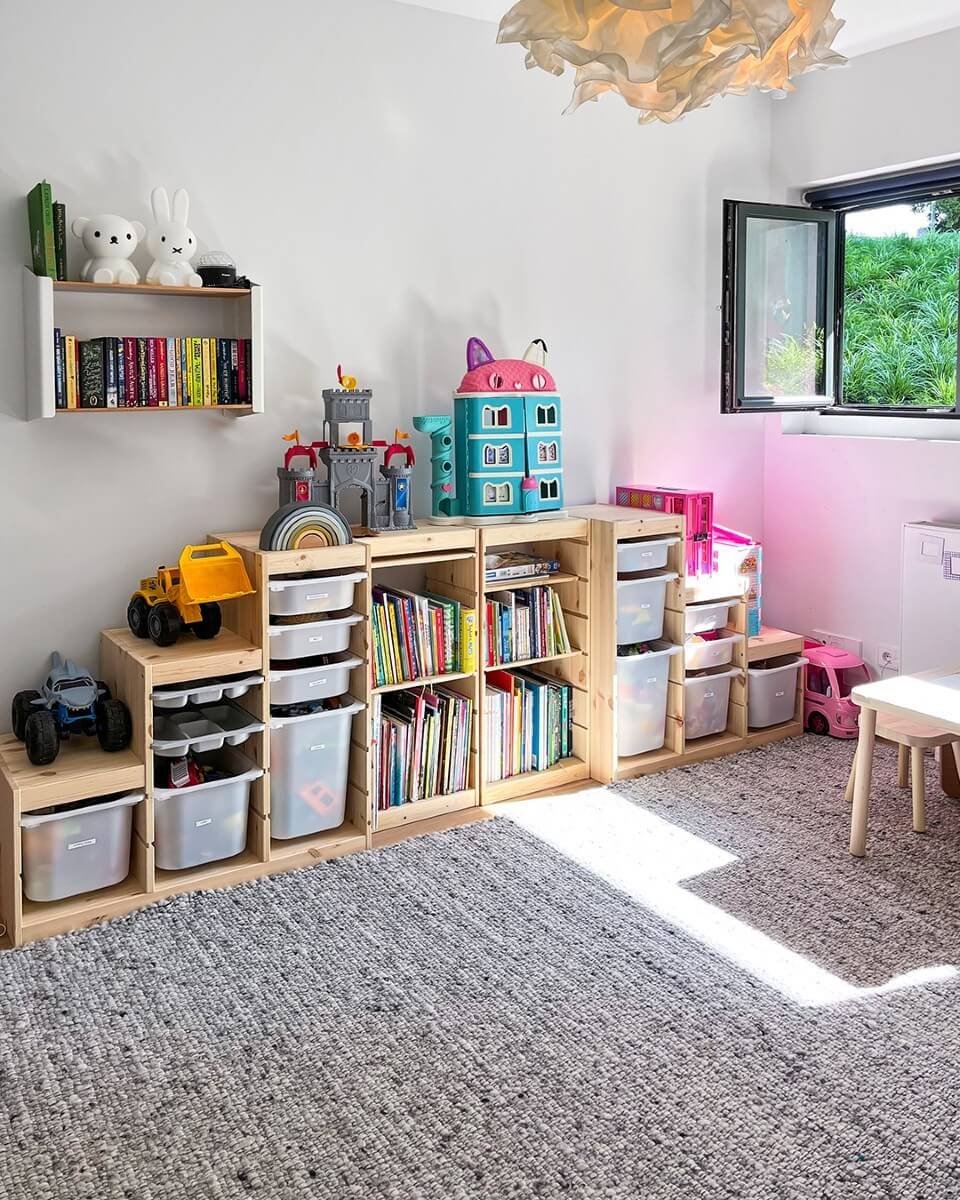
Clear plastic bins paired with open wooden shelving create an organizational system that’s both accessible and visually calming.
This setup allows kids to see exactly where everything goes—making clean-up routines easier to stick to. Labeled bins offer structure without rigidity, especially for sorting toys by type (Legos, dolls, trucks, etc.), while the low shelves ensure even younger kids can reach their favorite items.
Bonus: you can swap out contents seasonally or as interests change without overhauling the whole system. It’s a Montessori-inspired approach that promotes independence while maintaining order.
3. Design Around the Bed for Built-In Functionality
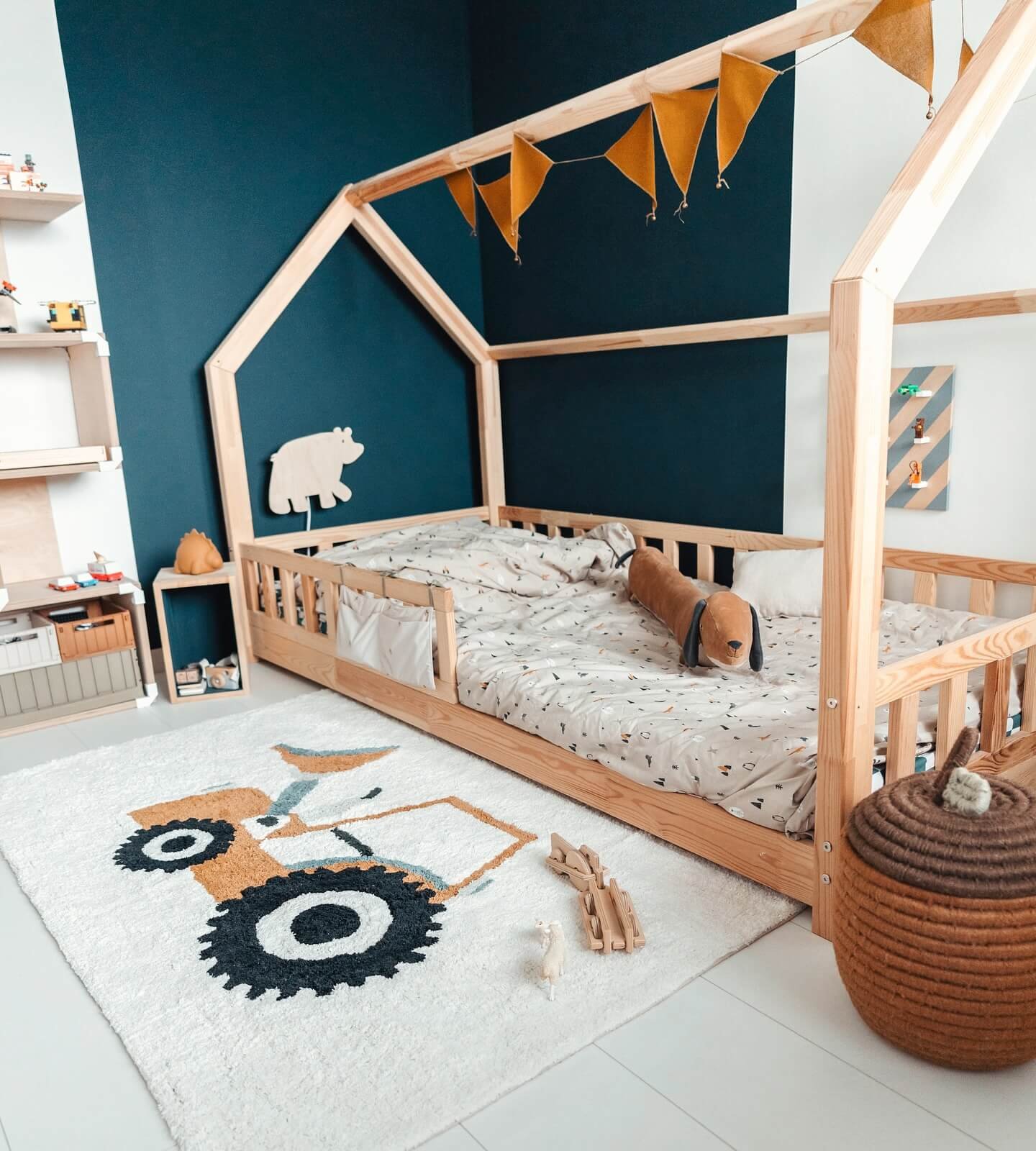
When floor space is limited, every piece of furniture should pull double duty. This cozy bed frame, styled like a miniature house, includes low sides for safety and hidden pockets for books or plush toys—great for bedtime reading or nighttime storage.
The space around the bed is just as organized, with shelves and baskets nearby to keep favorite items within reach. Even the decor, like the overhead garland, serves to create a sense of structure and personality.
With a setup like this, the bed becomes a functional centerpiece, not just a place to sleep.
4. Create a Grab-and-Go Station for Daily Essentials
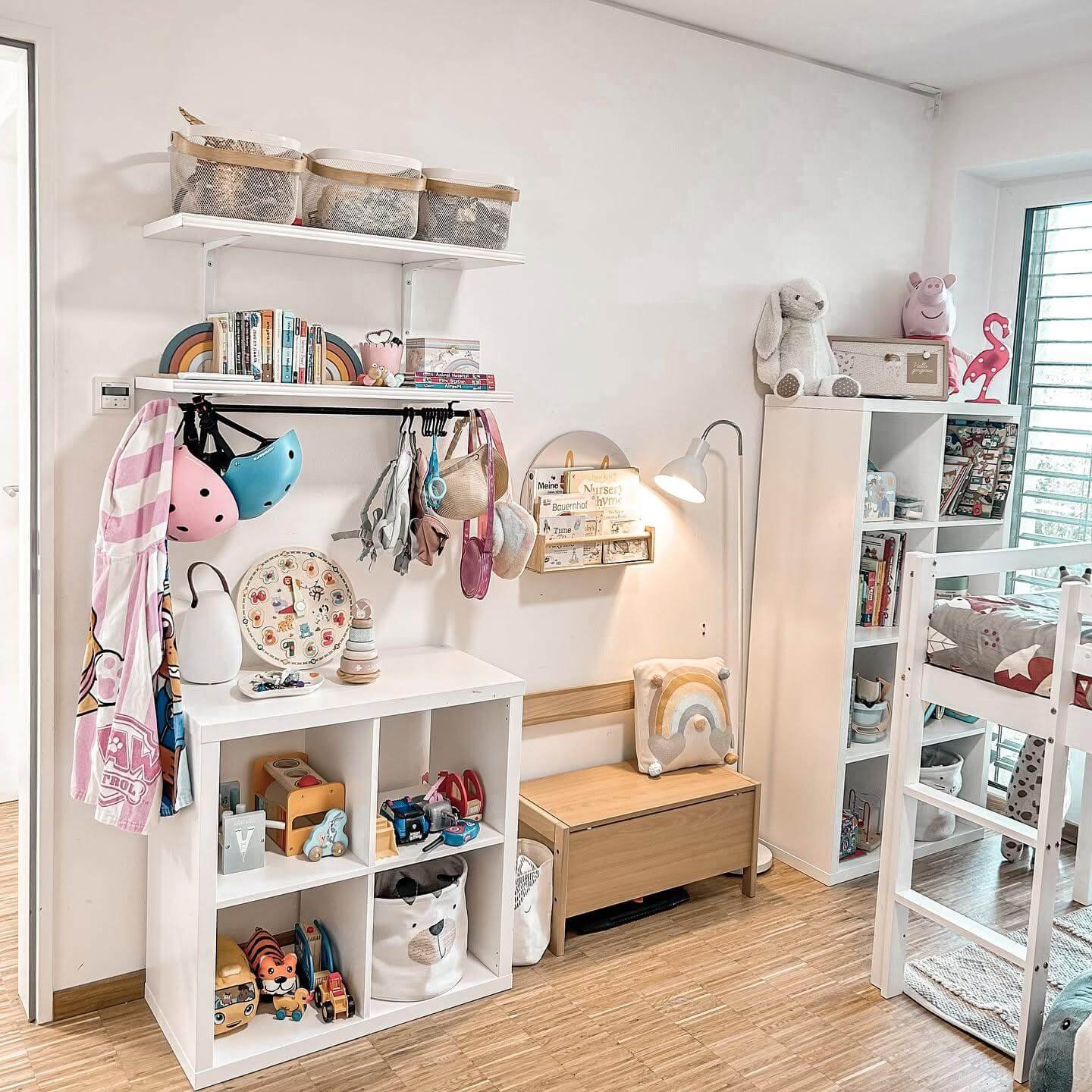
Getting ready becomes easier (and more fun) with a dedicated grab-and-go station like this one. By combining wall hooks, cubbies, and bins, this layout ensures that helmets, backpacks, hats, and favorite toys all have their place.
Seasonal items and accessories can be rotated in and out of the upper shelf baskets, while everyday things stay within easy reach. The setup makes mornings smoother and encourages kids to be responsible for their belongings.
Plus, using vertical space above low storage helps keep the room tidy while still being highly functional.
5. Incorporate Built-In Cabinets for Seamless Storage
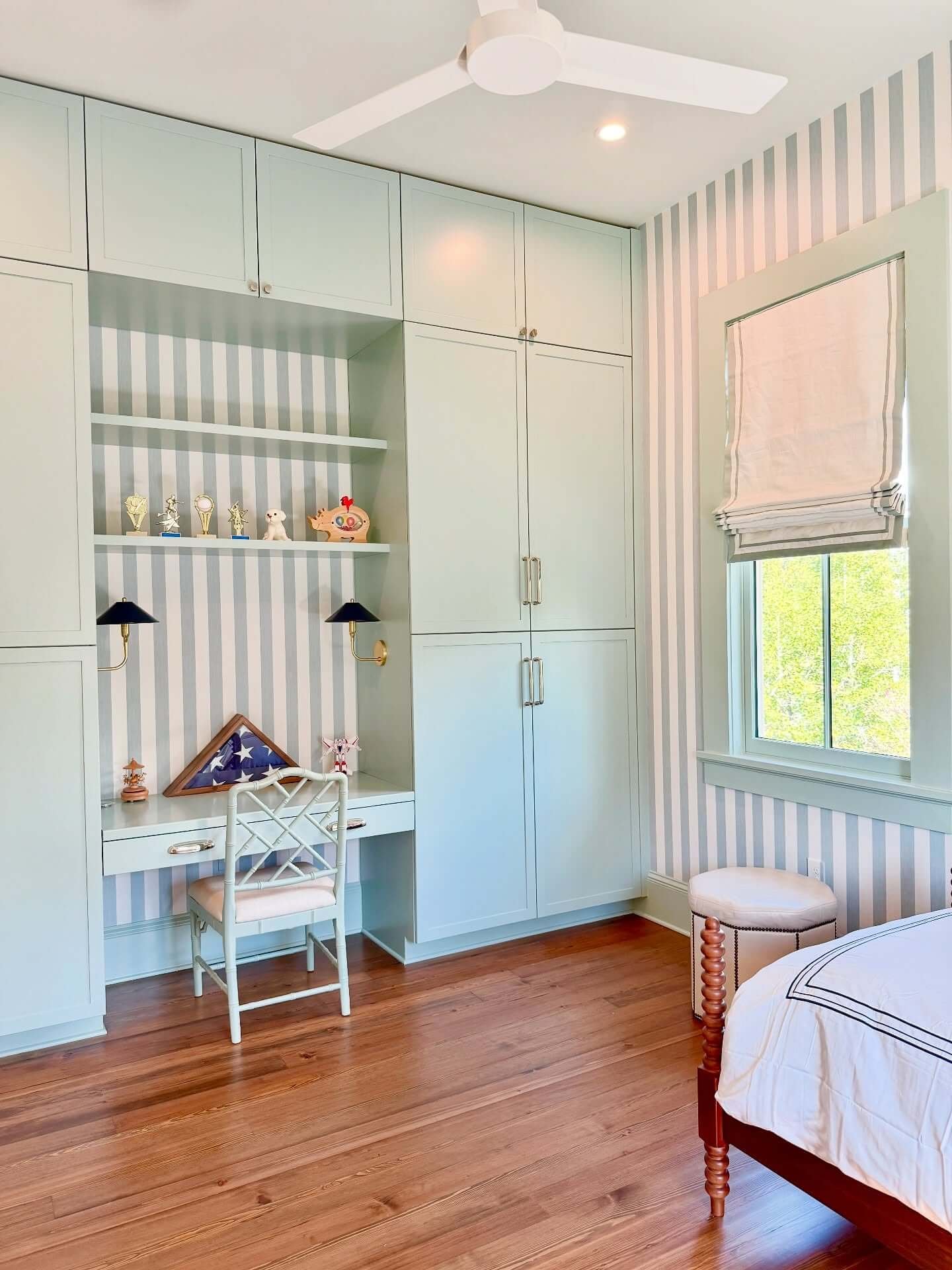
For a sleek and polished look, built-in cabinetry is hard to beat. This wall of storage hides away toys, clothes, and clutter behind closed doors, while the central open shelves offer a perfect display area for favorite books, trophies, or toys.
It creates a balance between function and design—everything has a place, but the room still feels warm and personal.
Built-ins like this also grow well with your child, making them a smart long-term investment for organization that adapts to changing needs.
6. Make Organization Fun with a Rainbow-Themed Room
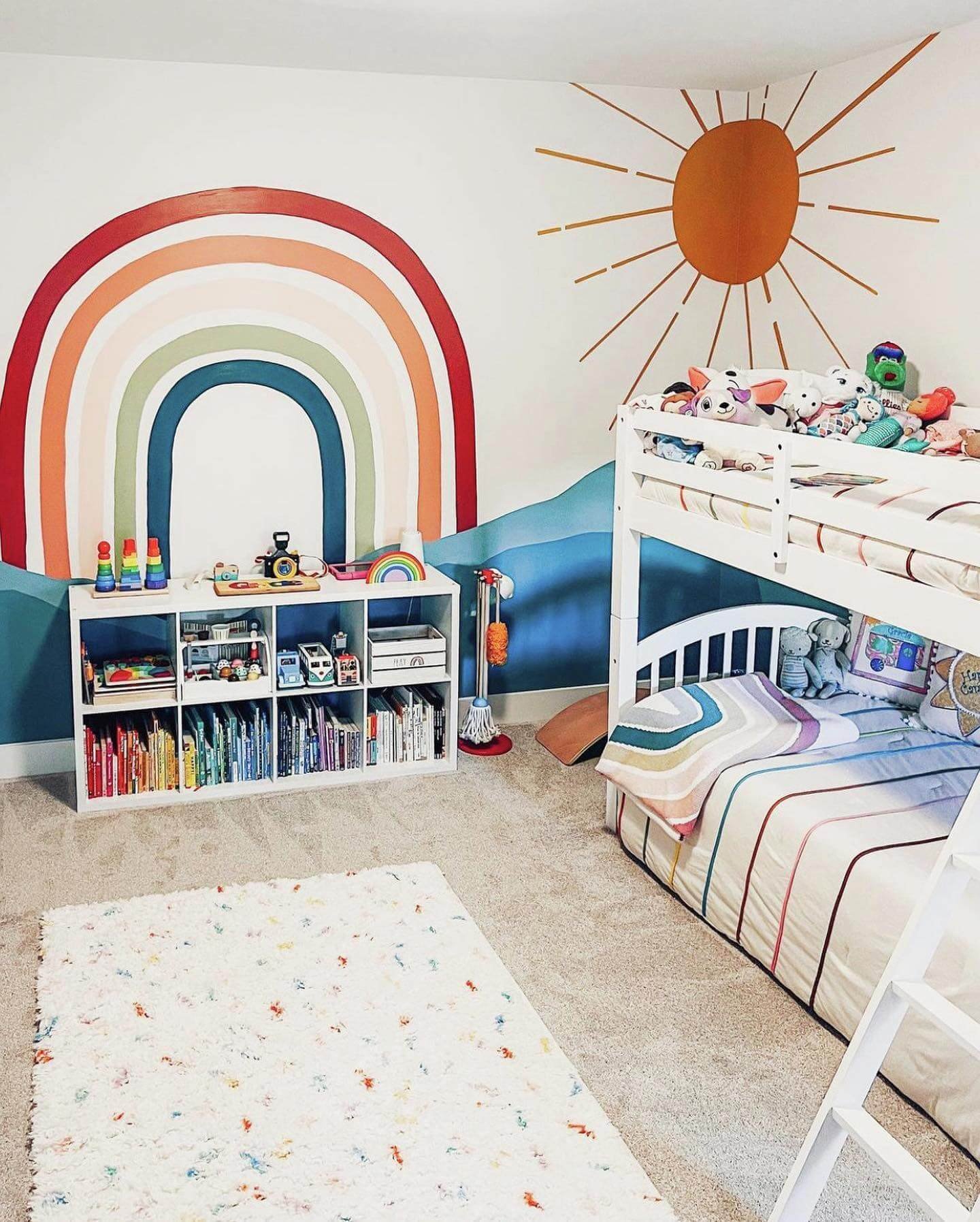
Color-coded storage isn’t just practical—it can be part of the room’s decor. This rainbow-themed kids’ room uses color as both a design element and an organizing tool.
The bookshelf is sorted in ROYGBIV order, making it visually appealing and easier for children to find or return books. A low cubby shelf holds toys and art supplies, giving each item its own home.
The use of bunk beds saves floor space, and the cheerful wall mural makes the entire room feel inviting. A setup like this fosters creativity while subtly teaching sorting and categorization skills.
7. Create a Minimalist Homeschool Nook
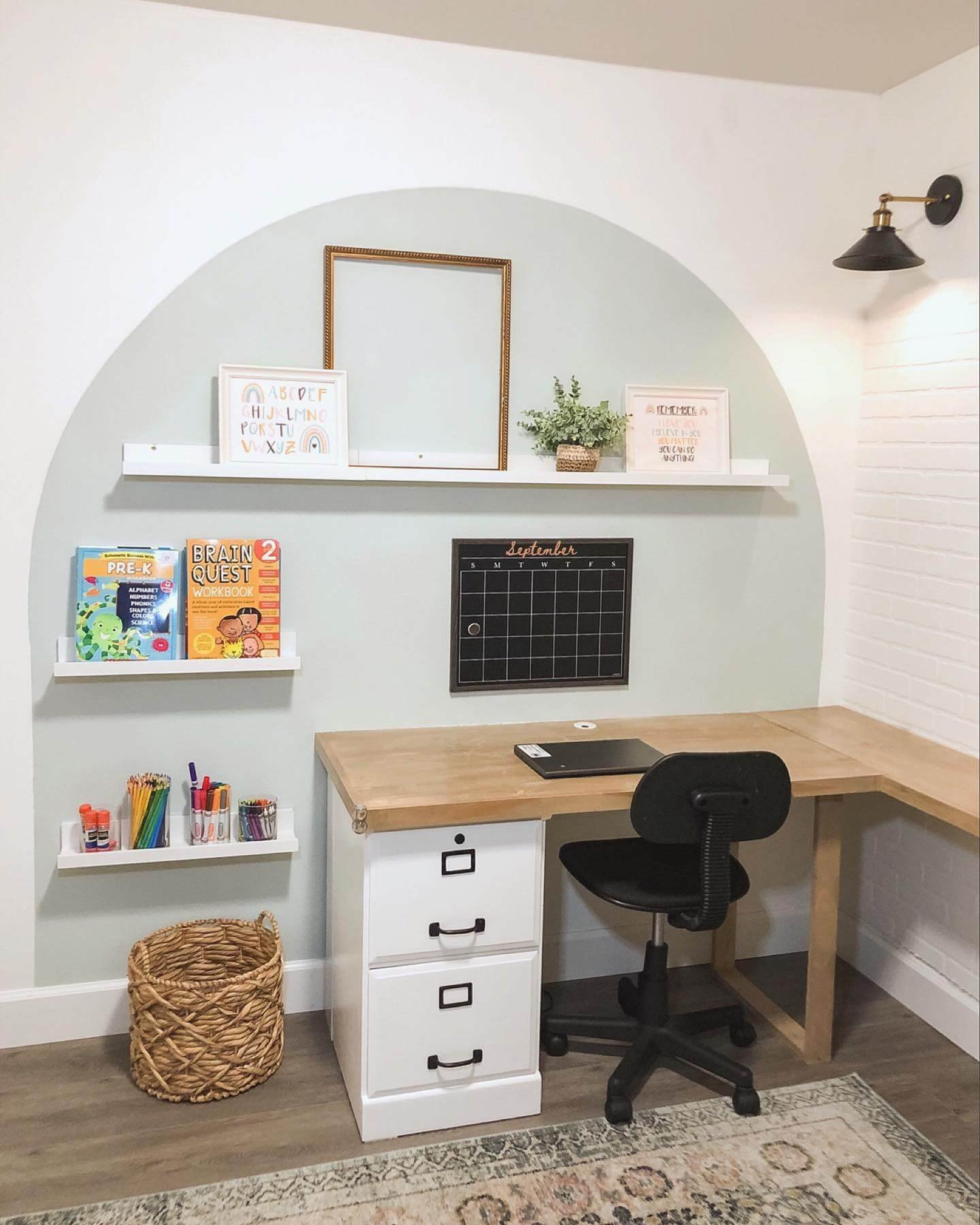
Simplicity is key when it comes to keeping a learning area organized. This minimalist homeschool corner features clean lines, a sturdy desk, and strategically placed shelves for books, pencils, and essentials.
The arch mural adds a soft visual anchor to the space without adding clutter. A wall calendar keeps everyone on schedule, and a woven basket below the desk offers extra hidden storage.
Whether for homeschooling or homework, this clutter-free zone is ideal for focus and productivity, proving that less really can be more in kids’ room design.
8. Add Floating Shelves for Flexible Display and Storage
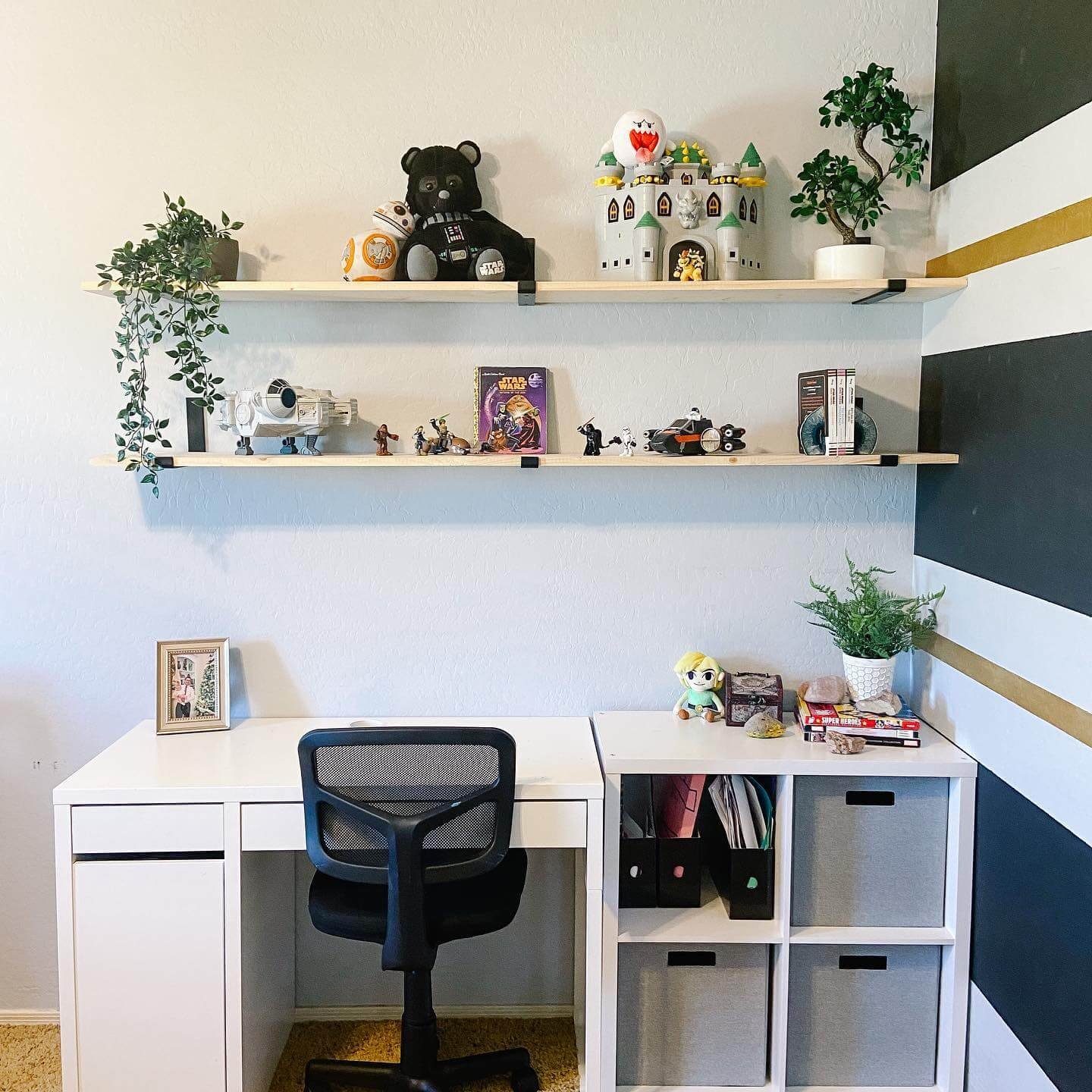
Floating shelves are an excellent way to combine decor with function. This setup utilizes the vertical wall space above a child’s desk to display toys, collectibles, and favorite books.
The cubby storage next to the desk helps sort school supplies, documents, and craft materials into labeled bins—perfect for maintaining order without sacrificing personality. Open shelving encourages regular rotation of toys and books, helping to keep things fresh while minimizing clutter.
This system is especially great for older kids and teens who want to personalize their space while staying organized.
9. Use Color-Coded Drawers for Craft and School Supplies
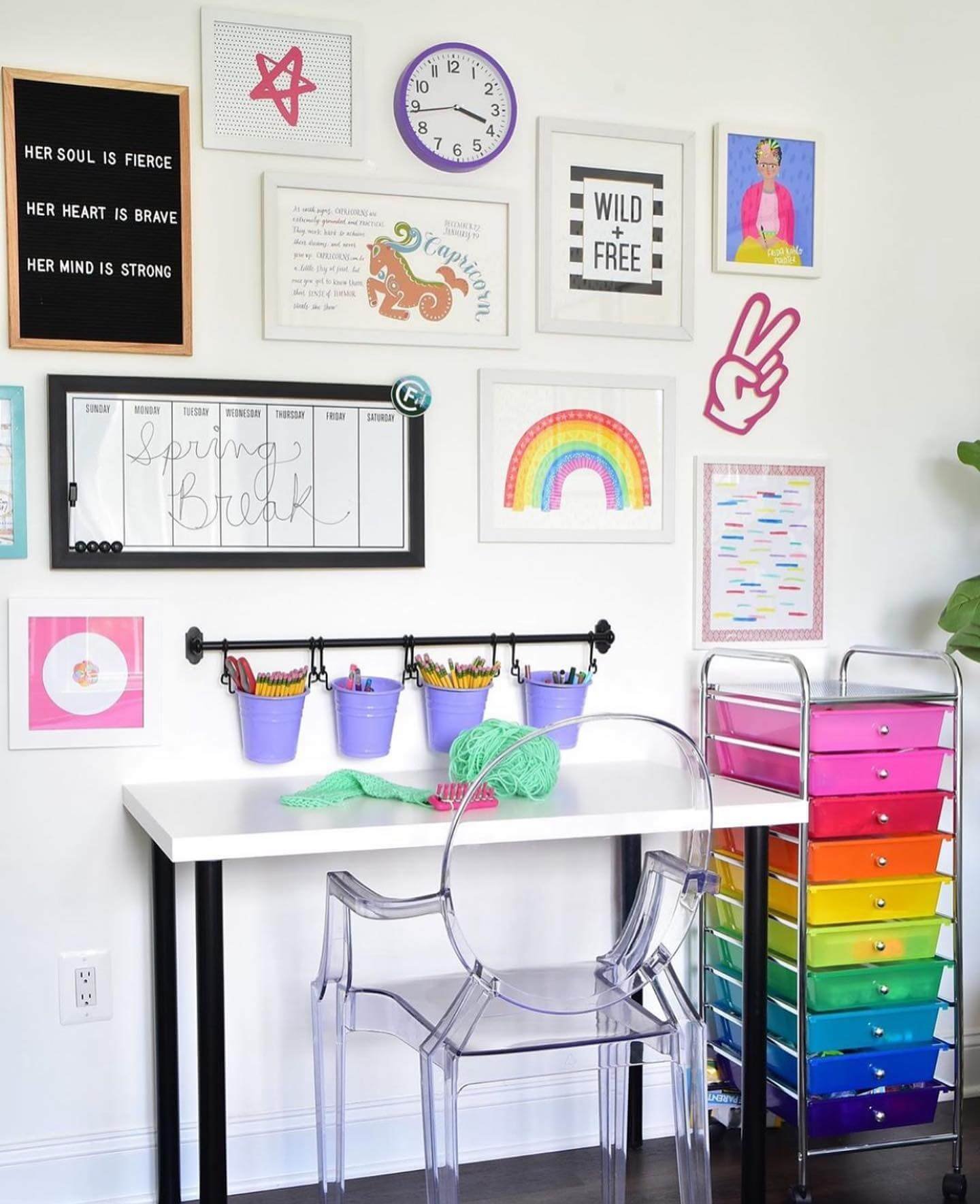
If you’re dealing with lots of small items like art supplies, stationery, or craft tools, a rainbow drawer cart is your best friend.
This colorful rolling organizer makes sorting and accessing materials easy and fun. Each drawer can be assigned a category—markers in red, glue sticks in orange, papers in yellow, and so on.
The mounted buckets above the desk offer additional grab-and-go storage, and the gallery wall above adds inspiration and a sense of ownership. This is a perfect solution for creative kids who love art, drawing, or DIY projects.
10. Design a Tween-Friendly Space with Grown-Up Style

As kids grow, their rooms need to evolve too. This tween-friendly room features modern furniture, a neutral color palette, and a thoughtful blend of display and storage options.
Shelves are used to showcase collectibles in a tidy way, while under-bed and bedside cubbies provide easy access to books and essentials. The large desk area encourages independence in homework and hobbies, and a mirrored closet helps visually expand the space.
This room strikes a balance between youthful charm and a more mature, functional layout, ideal for transitioning kids into their next life stage.
11. Use Clear Bins and Labels for Categorized Toy Storage

Clear plastic bins with bold labels are a powerhouse for keeping small toys under control. In this setup, toys are grouped by type—electronics, figures, pretend play, and more—making it super easy for kids to find what they need and put it back when done.
The cube organizer offers a visual inventory of what’s inside each compartment, reducing frustration and encouraging responsibility. This approach works especially well in rooms where storage doubles as decor.
When everything has a designated spot, the room feels more spacious and much easier to maintain.
12. Soft Storage and Low Furniture for Toddler-Friendly Organization
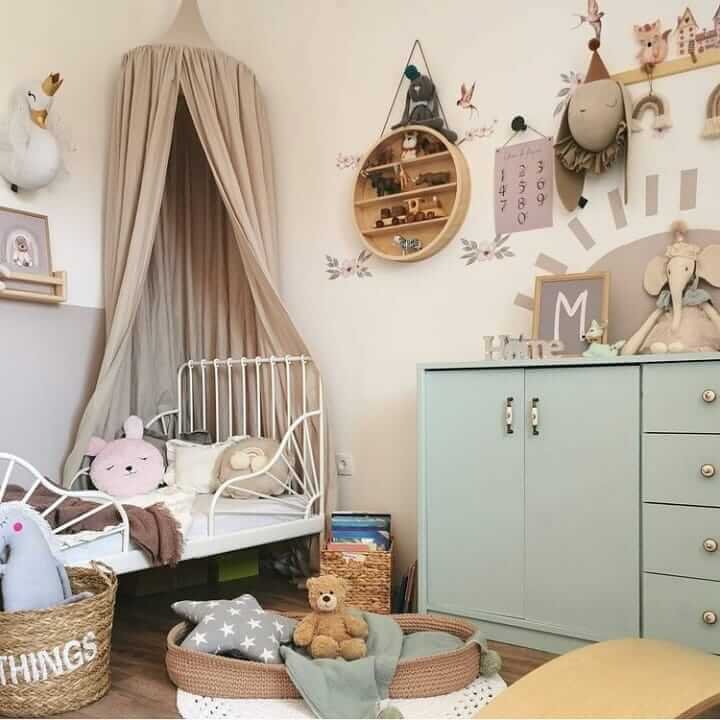
For toddler rooms, accessibility and softness are key. This whimsical nursery-style setup features low baskets, gentle shapes, and fabric bins labeled for everyday use.
The soft canopy and cozy textures create a calming environment, while open shelving and a low cabinet make it easy for little ones to reach books, toys, and comfort items.
The aesthetic is minimalist, but every piece serves a functional role in teaching early independence. Bonus: the muted tones make it easy to adapt as the child grows.
13. Mix Closed and Open Storage for Balanced Design
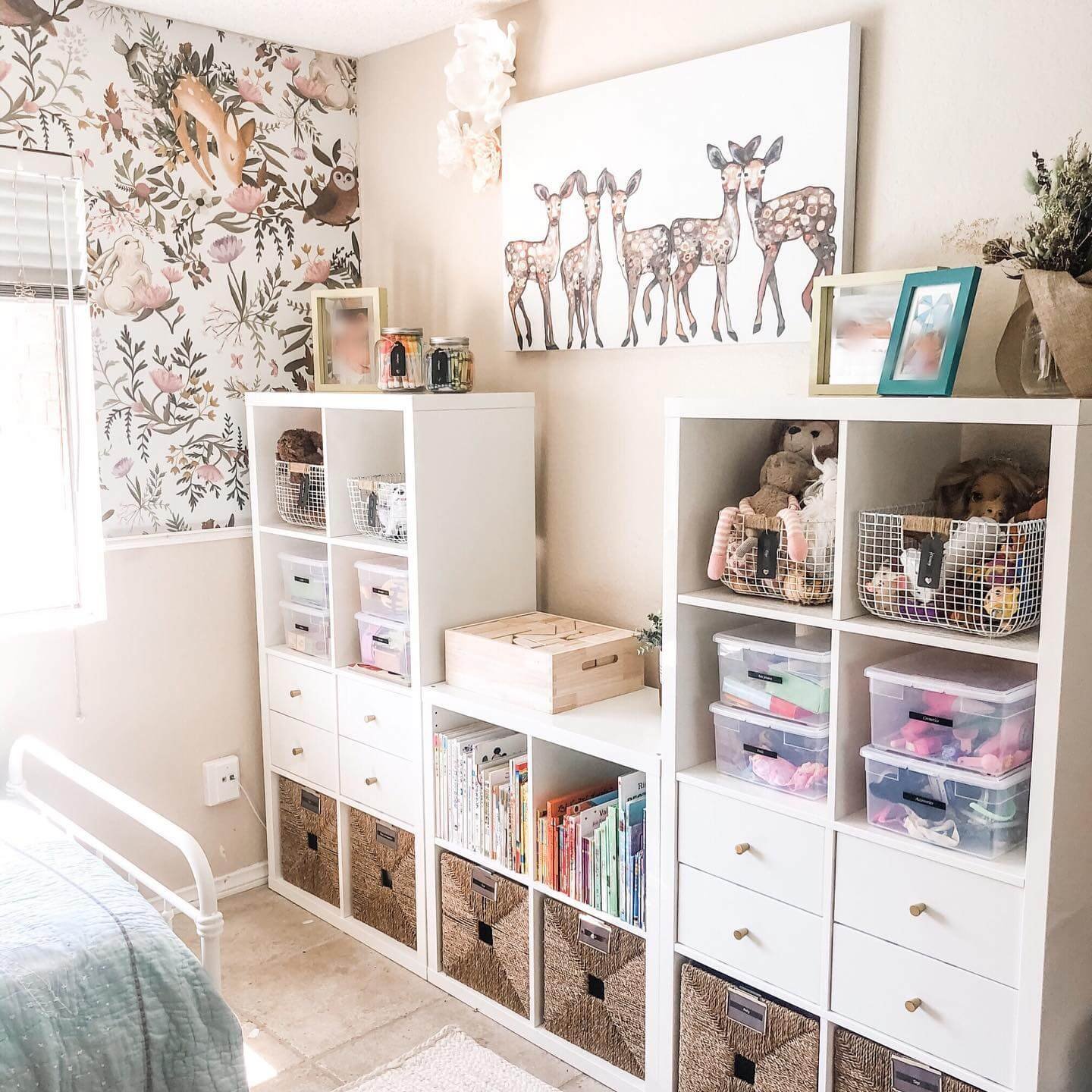
Combining open cubbies with pull-out bins and drawers creates a flexible storage system that looks great and performs even better. This woodland-themed room uses labeled containers and woven baskets to organize everything from art supplies to books and toys.
Closed drawers hide visual clutter, while see-through boxes keep frequently used items accessible. The dual-column shelving provides balance and symmetry, ideal for shared rooms or for splitting up play and learning zones. It’s a practical layout that adapts well to changing needs and interests.
14. Designate a Creative Corner with Wall Art Display
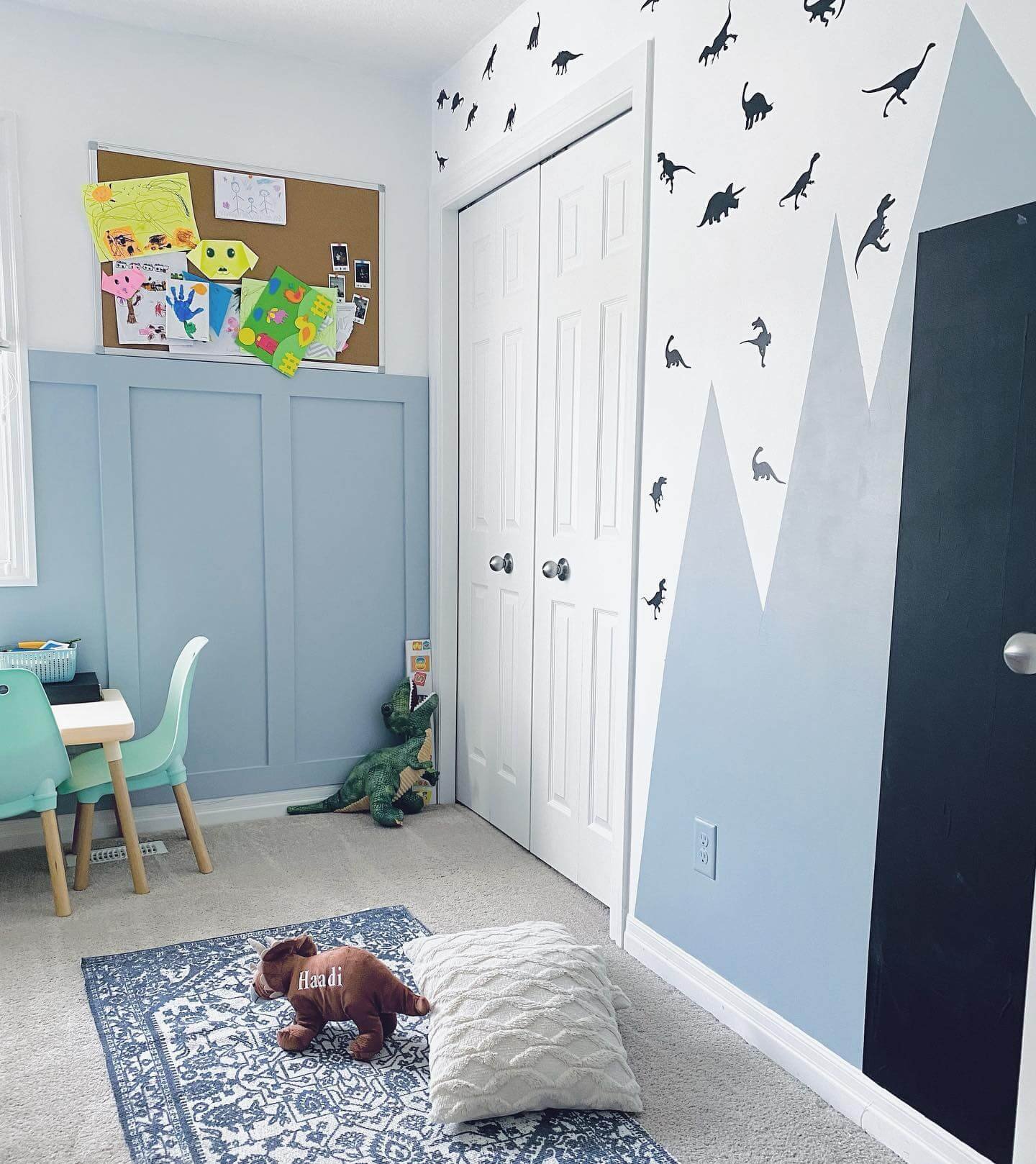
Kids love to showcase their artwork—and giving them a dedicated spot to display it adds both personality and order to a room.
This dinosaur-themed room cleverly uses a bulletin board to hang creative projects, keeping the space dynamic and personalized. Below, a minimalist table and chairs offer a tidy place for coloring or puzzles.
Keeping the creative zone slightly separated from the sleep or storage areas helps reinforce routines and gives each part of the room a purpose. It’s a simple but impactful way to encourage imagination without inviting clutter.
Latest Posts
- Over TV Wall Decor Living Room Ideas That Work Around Your Screen

- Open Wall Decor Living Room Ideas That Style Without Closing In Small Spaces

- High Ceiling Wall Decor Living Room Ideas That Fill Vertical Space With Style

- Long Living Room Wall Decor Ideas That Finally Fill Those Endless Blank Spaces

- Brick Wall Living Room Decor Ideas That Add Texture Without Looking Dated

- Brick Fire Pit Ideas Backyard That Create Classic Charm With DIY Appeal
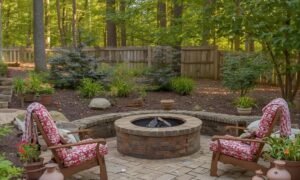
15. Optimize Awkward Spaces with Modular Storage
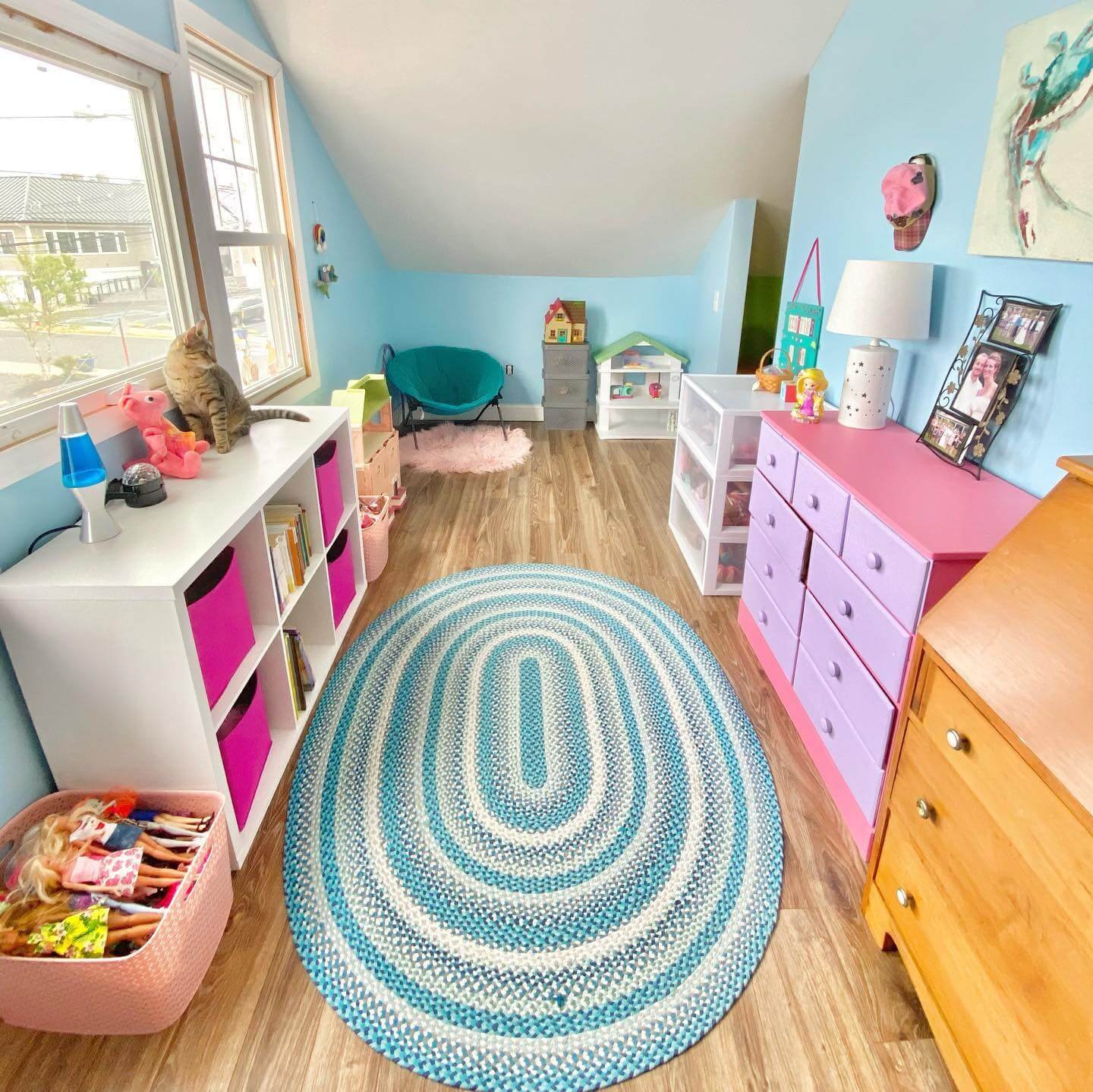
Attic rooms or spaces with sloped ceilings can be tricky, but with the right layout, they can become highly functional. This bright and colorful room makes use of low-profile storage units and colorful fabric bins to bring order to the space without overwhelming it.
Open shelving lines the wall below the windows, and a combination of drawer towers and baskets provides extra storage.
Using lightweight, movable pieces makes it easy to rearrange as needed. The cozy rug helps define the play area, making this a great example of zoning in a multi-use kids’ room.
16. Use Themed Decor to Reinforce Organization Zones
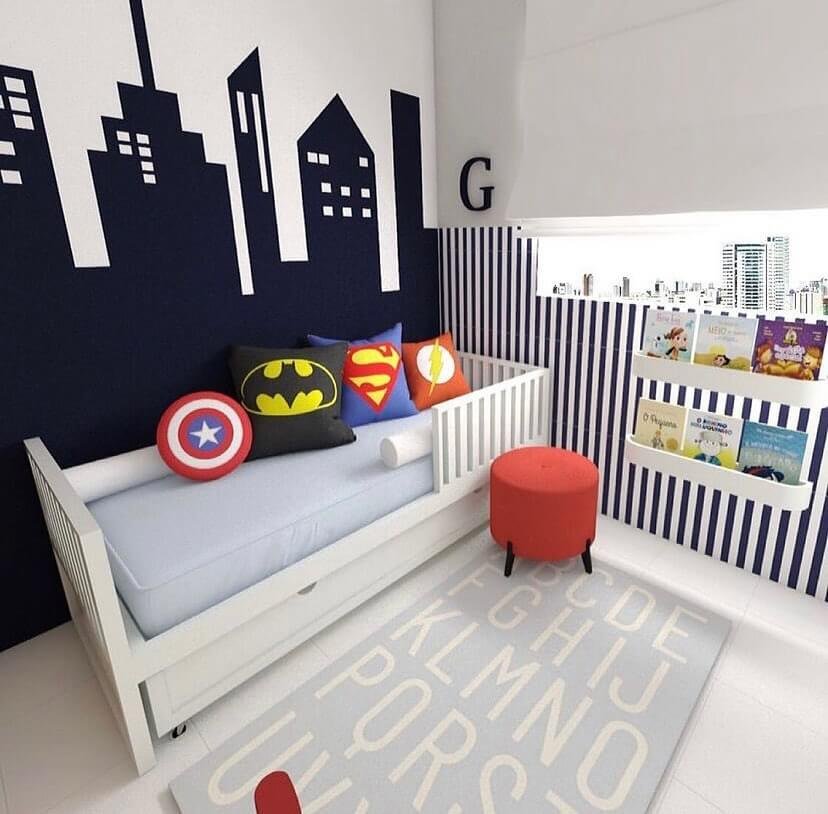
Superhero-themed rooms can be both fun and functional. In this setup, bold wall graphics and superhero pillows energize the space, while the lower book ledge helps designate a reading corner without bulky furniture.
The alphabet rug adds an educational element, blending learning and play seamlessly.
With a trundle-style bed for sleepovers and a clear delineation of activities—reading, relaxing, and sleeping—this space shows how themed decor can support better organization without adding clutter.
17. Incorporate Playful Bins to Make Clean-Up Time Fun

Kid-friendly storage bins with colorful dinosaur prints transform clean-up time into a game. This cubby-style shelf includes both open and closed storage, ideal for grouping different toy types.
Displayed toys on top keep the space engaging, while the themed bins reinforce a love of learning and sorting.
These types of bins are great for labeling by toy type or theme, and they’re especially effective for toddlers and preschoolers who are just learning how to tidy up independently.
18. Go Bold with Graphic Patterns and Modular Storage

Modern design meets child-friendly functionality in this bold nursery layout. The geometric wallpaper and color-blocked furniture give the room a contemporary edge, while the low crib and dresser offer easy-access storage.
The key here is visual consistency—repeating patterns and colors across storage and decor help the room feel cohesive, even if it’s full of varied items. It’s a great strategy for parents who want a stylish space that grows with their child.
19. Create a Mini Cityscape for Cozy, Organized Sleep Zones
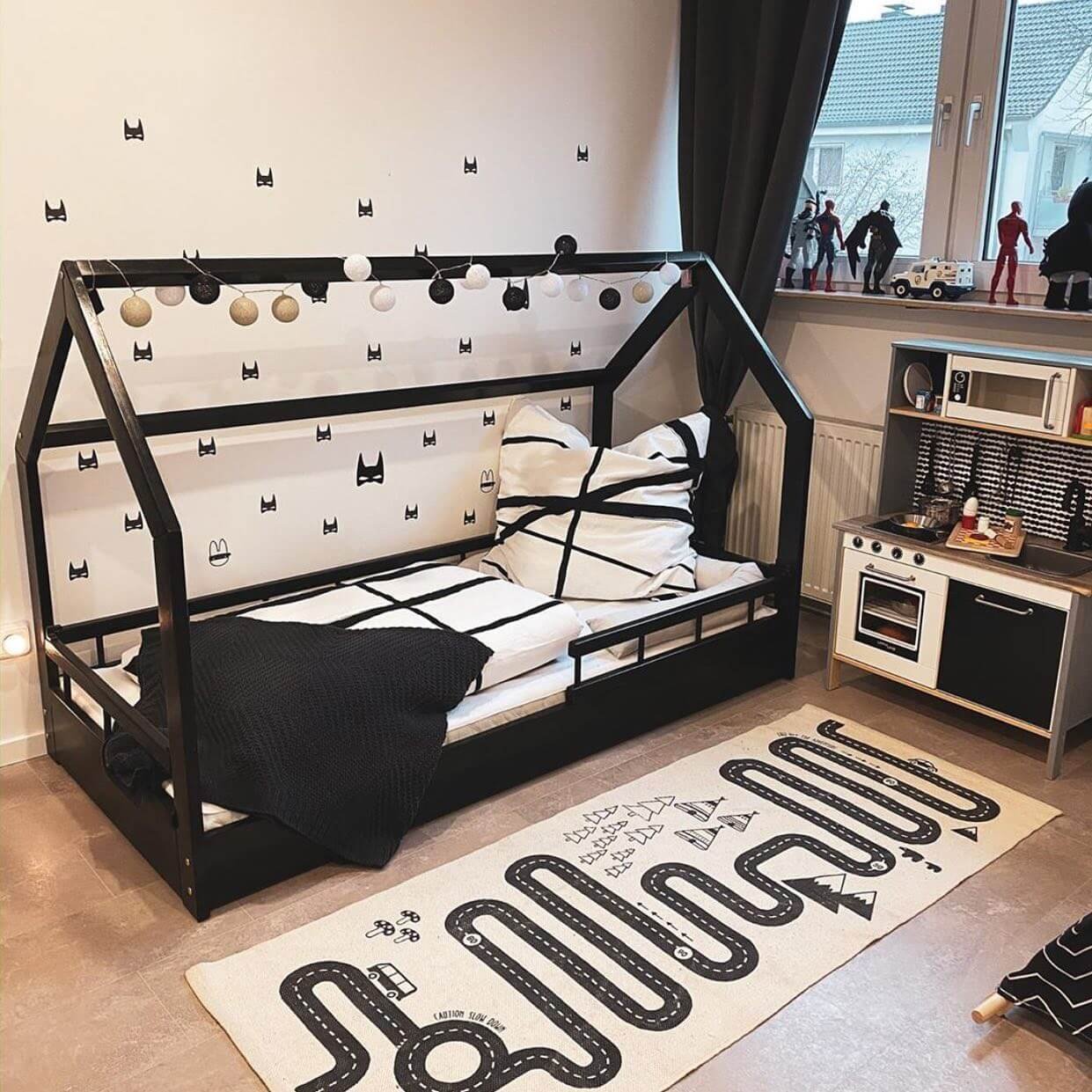
This monochrome room proves that a bold palette doesn’t have to mean clutter. The house-shaped bed frame and road-pattern rug define the sleeping and play areas, while the compact kitchen set and shelving keep toys in order.
The room leans into a cityscape and superhero theme with subtle, consistent touches. Smart use of furniture placement keeps the flow intuitive for a child, showing how even small rooms can support both play and rest in a well-organized way.
20. Use Vertical Book Rails for a Stylish Reading Nook
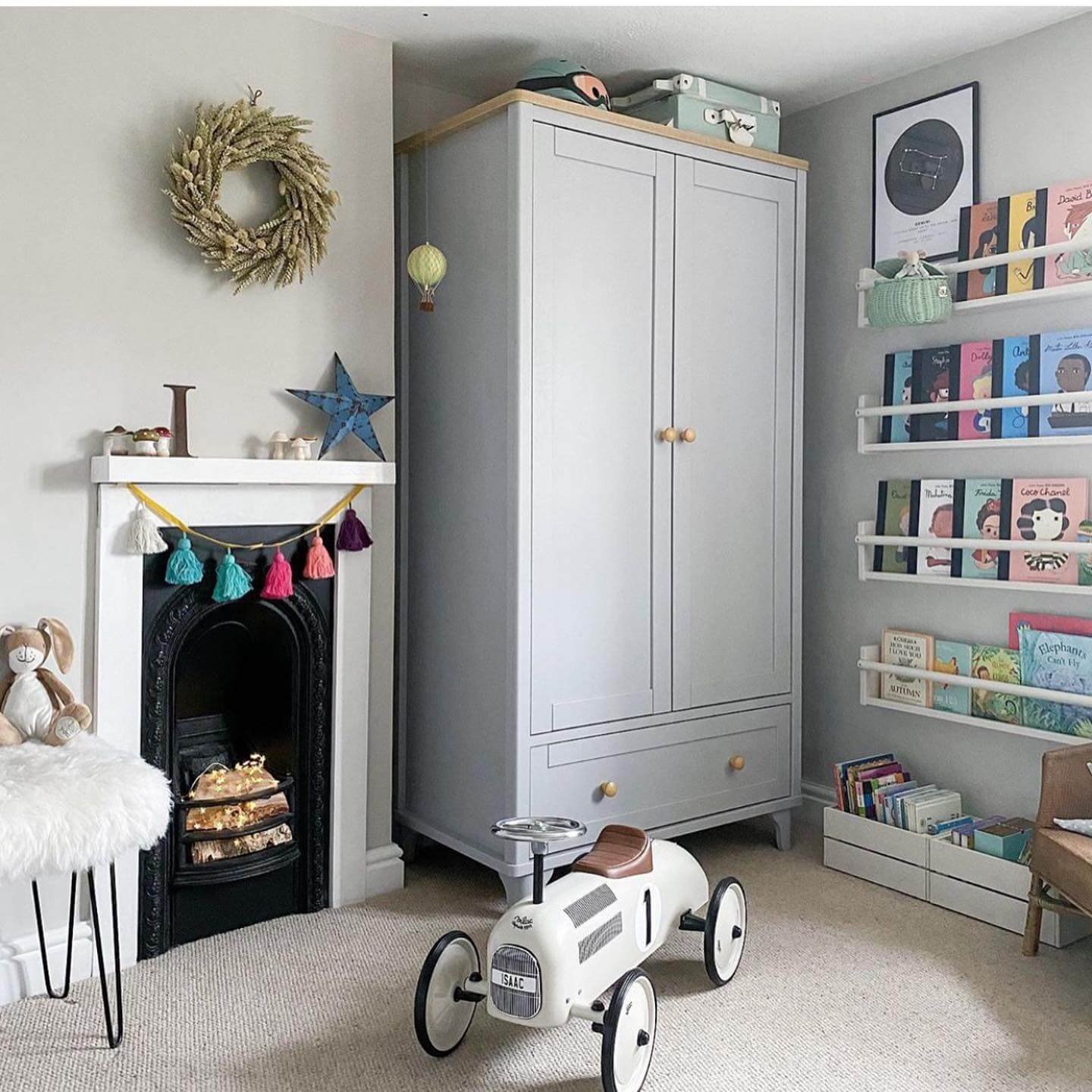
Wall-mounted book rails are an elegant solution for organizing books without taking up floor space. This cozy, neutral-toned room uses three levels of horizontal rails to display books face-forward—ideal for encouraging kids to read more.
The minimalist wardrobe and soft textiles keep the room feeling spacious, while small decor items add warmth without clutter. This layout is ideal for smaller rooms or for creating a quiet, screen-free retreat within a larger space.
21. Decorate Above the Bed with Functional Wall Shelves
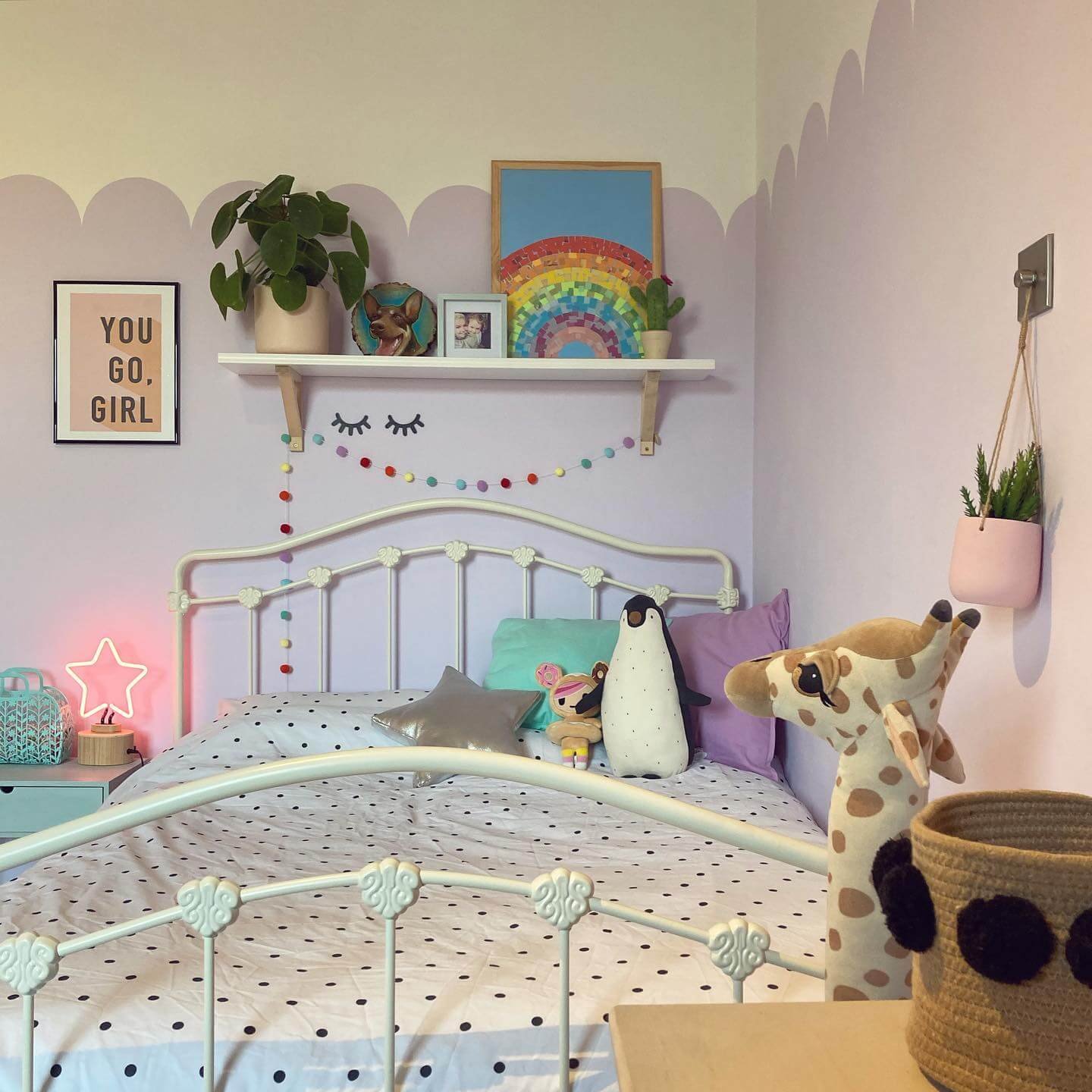
Wall space above the bed is often underutilized, but in this room, it becomes both decorative and practical.
A single floating shelf holds framed art, greenery, and a rainbow print, giving the space personality without adding clutter. Soft lighting, wall decals, and pastel tones create a cozy and calming atmosphere, while stuffed toys stay neatly on the bed rather than scattered around.
Small details like a nightstand basket and hanging planter make the space feel organized and complete. It’s a charming example of how thoughtful styling can double as kid-friendly storage and display.
A Tidy Room Is a Happy Room
Organizing a kids’ room doesn’t have to be overwhelming or expensive—it just requires a bit of creativity and a plan that suits your child’s needs and personality. Whether it’s color-coded bins, multi-functional furniture, or themed zones that spark joy, the right system makes a world of difference.
When kids have access to an organized space that reflects their interests and allows them to participate in tidying up, it fosters independence, responsibility, and even imagination. From toddlers to tweens, the ideas in this list show that a well-organized room can be both playful and practical.
So whether you’re tackling a major declutter or just looking for fresh inspiration, remember this: a tidy kids’ room isn’t about perfection—it’s about creating a space where your child can thrive.

